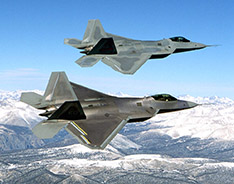It didn’t start with the F-35 or even the $640 toilet seat. Military overruns and rip-offs have a long (and expensive) history, starting in the earliest days of the republic:
| 1778 |
General George Washington decries the suppliers overcharging his army: “It is enough to make one curse their own Species, for possessing so little virtue & patriotism.” 
George Washington Wikipedia
|
| 1794 |
The Navy’s first order for frigates faces shipyard delays, and its cost shoots up to more than $1.1 million. 
USS Constitution Wikipedia
|
| 1861 |
A House committee exposes fraud, favoritism, and profiteering in Civil War contracting. Its findings, writes the New York Times, “produce a feeling of public indignation which would justify the most summary measures against the knaves whose villainy is here dragged into daylight.” |
| 1941 |

“Investigator Truman” Time/Wikimedia Commons
Sen. Harry S. Truman kicks off a dogged investigation of wasteful war production. The Truman Committee, which runs into World War II, is credited with saving as much as $15 billion (more than $230 billion in today’s dollars). |
| 1975 |
Wisconsin Sen. William Proxmire calls out the Pentagon for maintaining 300 golf courses around the world. (Today it has 200.) 
Golfing at a DoD course US Department of Defense
|
| 1983 |
President Ronald Reagan announces the Strategic Defense Initiative, a.k.a. “Star Wars,” a system of ground- and space-based lasers that will stop incoming nuclear missiles. Still unrealized, the program has cost more than $209 billion. 
President Ronald ReaganThe Ronald Reagan Presidential Foundation and Library
|
| 1985 |
Pentagon profligacy makes headlines with reports of $640 toilet seats, $660 ashtrays, $7,600 coffee-makers, and $74,000 ladders. “Our attack on waste and fraud in procurement—like discovering that $436 hammer—is going to continue,” Reagan says, “but we must have adequate military appropriations.” |
| 2001 |
No-bid Pentagon contracts explode after 9/11, jumping from $50 billion in 2001 to $140 billion in 2010. |
| 2001 |
Halliburton subsidiary KBR takes over a contract to feed soldiers in Iraq. It raises the price of a meal from $3 to $5 while subcontracting the services back to the previous contractor. |
| 2009 |

F-22s Wikimedia Commons
After safety problems and cost overruns, the Pentagon cancels the F-22 Raptor fighter jet (estimated price tag: $412 million per plane) and puts the money toward buying F-35s. |
| 2010 |
The Government Accountability Office finds that the Defense Logistics Agency is sitting on $7.1 billion worth of excess spare parts. |
| 2010 |
An anonymous congressional earmark sets aside $2.5 billion for 10 C-17 aircraft the Air Force says it does not need. |
| 2011 |
Boeing charges the Army $1,678 apiece for rubber cargo-loading rollers that actually cost $7 each. |
| 2012 |
 One-quarter of the $1.6 trillion being spent on major weapons systems comes from unexpected cost overruns. |
| 2012 |
The Air Force scraps a new logistics management system that has shown “negligible” results—after spending $1 billion on it. |
| 2012 |
Sen. Tom Coburn (R-Okla.) slams $68 billion in frivolous Pentagon spending: “Using defense dollars to run microbreweries, study Twitter slang, create beef jerky, or examine Star Trek does nothing to defend our nation.” 
The Starship Enterprise Paramount
|
| 2012 |
The House oversight committee finds that the Swiss contractor that fed troops in Afghanistan was overpaid by $757 million. The company claims it’s still owed $1 billion. |
| 2013 |
The military and VA are found to have spent $1.3 billion on a failed health records system for vets. That’s after the Pentagon already spent $2 billion on an unsuccessful upgrade of its electronic medical records system. |
| 2013 |
The Army announces plans to replace its camouflage pattern, which was introduced in 2004 and cost $5 billion to develop. The new one will cost $4 billion. 
US Army uniforms Wikipedia
|
| 2013 |
Sen. John McCain (R-Ariz.) decries the F-35 Joint Strike Fighter as “one of the great national scandals that we have ever had, as far as the expenditure of taxpayers’ dollars are concerned.” |
| 2013 |
The Pentagon plans to scrap more than 85,000 tons of equipment in Afghanistan, part of $7 billion worth of gear being left behind as the troops come home. |

















